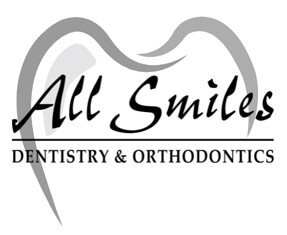
Invisalign consists of aligners that are known for their appearance. These aligners are tailored to each individual’s teeth. They work gradually to shift them into the desired position. Invisalign is especially popular among adults and teenagers who prefer an orthodontic solution that does not involve wearing braces.
On the contrary, traditional braces involve metal brackets and wires that are attached to the teeth. These components are adjusted over time to align the teeth properly. While metal braces are common, ceramic braces provide an aesthetic alternative.
Invisalign: The transparent look of Invisalign aligners makes them an appealing choice for people concerned with how noticeable their orthodontic treatment appears. Adults who need to uphold a professional image in the workplace often favor aligners, for teeth alignment.
Braces: Traditional metal braces are easily noticeable, while ceramic braces provide a more discreet option.
Invisalign: The transparent look of Invisalign aligners makes them an appealing choice for people concerned with how noticeable their orthodontic treatment appears. Adults who need to uphold a professional image in the workplace often favor aligners, for teeth alignment.
Braces: Traditional metal braces are easily noticeable, while ceramic braces provide a more discreet option.
Invisalign: Crafted from BPA plastic, Invisalign aligners typically offer greater comfort compared to braces, which can sometimes cause irritation to the gums and cheeks. However, some individuals may experience discomfort during the adjustment phase in the beginning of treatment or when transitioning to new aligners.
Braces: Discomfort and soreness may occur with braces after adjustments. The metal brackets and wires can also lead to irritation of the cheeks and lips. Many patients use wax for relief from discomfort.
Invisalign: The treatment duration with Invisalign varies based on case complexity, but usually spans from 12 to 18 months. Patients need to wear the aligners for 20–22 hours daily for the best outcome.
Braces: Traditional metal braces are easily noticeable, while ceramic braces provide a more discreet option.
Invisalign: One notable benefit of Invisalign is that the aligners can be taken out making it easier for patients to maintain hygiene by brushing and flossing without brackets in the way. It is important to clean the aligners to prevent bacteria buildup.
Braces: Keeping up with hygiene while wearing braces can be challenging due to the brackets and wires that can trap food particles. Patients need to be diligent in brushing and flossing to prevent plaque buildup and cavities. Using tools like brushes and water flosses can aid in maintaining oral hygiene.
Invisalign: Patients have the flexibility to remove Invisalign aligners when eating or drinking, allowing them to enjoy their foods without restrictions. However, it’s crucial to brush your teeth after meals before putting the aligners back in place to avoid trapping food inside the aligners and contributing to tooth decay.
Braces: Individuals with braces should steer clear of sticky or chewy foods that could potentially harm the brackets and wires. Foods like popcorn, nuts and chewy candies are generally best avoided.
Invisalign: The cost of Invisalign is usually comparable to that of braces, although it may vary based on factors such, as case complexity and location. Many dental insurance plans include coverage for Invisalign treatment. There are often payment options available.
Braces: Traditional metal braces are typically the cost choice. Ceramic braces may be pricier due to the materials used and their complexity.
Invisalign: is ideal for mild issues like crowding, spacing and minor bite concerns. While advancements have expanded its capabilities, Invisalign may not be suitable for major misalignment.
Braces: are effective in treating a range of dental problems, including severe crowding bite issues and complex orthodontic cases. Braces can apply forces, making them suitable for challenging situations.
Invisalign: TPopular among adults and teenagers seeking an invisible option. Invisalign offers a line for teens with compliance indicators to ensure usage and help hold them accountable for their care.
Braces: Suitable for patients of all ages, including children and teens. Early use of braces can address concerns during the patient’s growth and can allow the dentist to have more control over the outcome. Early orthodontics can prevent future issues.
When deciding between Invisalign and braces, there are factors to consider such as your lifestyle, how you want your teeth to look, your budget and the complexity of your issues. Here are some things to think about when making your decision;
If you don’t like the way braces look, Invisalign might be a choice because it’s not very noticeable.
If you want something easy to use; Invisaligns aligners can be taken out for comfort and flexibility.
If you have major alignment problems; Traditional braces could be better for dealing with major dental issues.
If cost is a concern; Metal braces are usually the more affordable option.
If you’re looking for treatment for a child; Braces are an option for kids who have dental problems that are still developing.
Both Invisalign and braces offer their benefits. It can help straighten teeth and improve oral health. It’s important to talk to an orthodontist who can evaluate your needs and recommend the treatment option for you. By thinking about your lifestyle, dental issues and personal preferences you can make a choice that fits with what you want for teeth and a more confident smile.
| M | T | W | T | F | S | S |
|---|---|---|---|---|---|---|
| 1 | 2 | 3 | ||||
| 4 | 5 | 6 | 7 | 8 | 9 | 10 |
| 11 | 12 | 13 | 14 | 15 | 16 | 17 |
| 18 | 19 | 20 | 21 | 22 | 23 | 24 |
| 25 | 26 | 27 | 28 | 29 | 30 | 31 |
